Hi, and welcome back to as seen on!
Today's newsletter is free because lots of you are new here, so I thought I’d show you what happens behind the paywall. Generosity becomes me.
I wrote about: Korean beauty’s 2025 M&A boom, girlbosses embezzling company funds, a frightening development in the exosome market, a SKIMS drive-thru, Meghan Markle’s first As Ever drop, why brands won’t (can’t) stop advertising on X, Gap’s new premium offer, and a bunch of other stuff…
Miu Miu announced the theme of its 2025 literary club—A Woman’s Education—featuring works by Simone de Beauvoir and Fumiko Enchi. I respect their dedication to the bit. This year alone, J.Crew has launched a literary-inspired collection, and Prada commissioned author
to write a short story collection for its Spring 2025 campaign. I think the next wave of this trend will come from the beauty category. So much to discuss, after all.Rhode teased eye patches, branded towels, and a face mist. Will happily host their bookclub once Substack makes me famous. Watch this space.
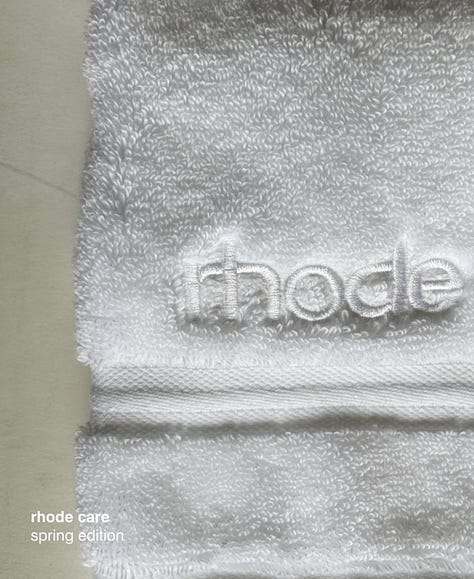
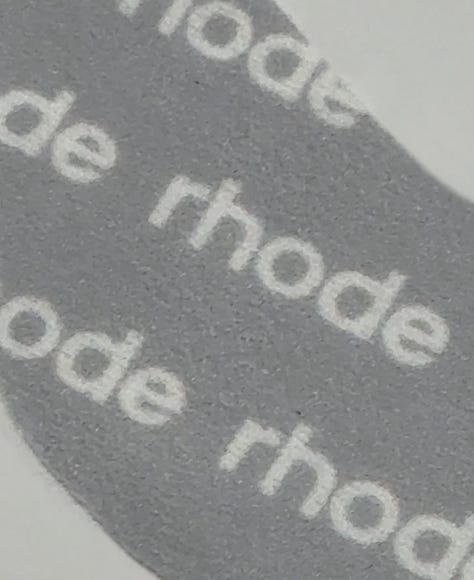
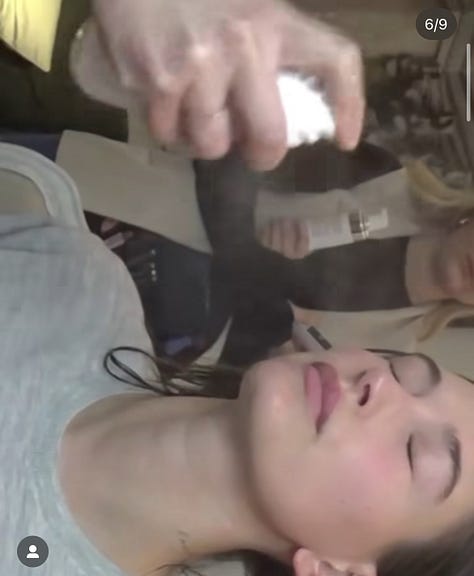
There's an eight-figure bidding war going on for the rights to a new thriller novel co-authored by James Patterson and MrBeast. The novel has already been put up for submission by UTA and is quickly gaining traction. Apparently, it's heavily inspired by Squid Game. (Shocker.)
Word on the street is that hard times call for founder fraud. Last week, Business of Fashion reported that Thirteen Lune co-founder Nyakio Grieco was being sued by investors for alleged fraud and embezzlement. According to court documents, company funds charged to the business card include more than $20,000 spent on flights for her family, $13,000 on cellulite removal treatments, and $7,500 for Taylor Swift tickets. Only one of these I can justify. Thirteen Lune’s net revenue dropped from $24 million in 2023 to $7 million in 2024. Grieco is also accused of erasing $4 million in shareholder equity by secretly moving all company assets to a new entity that she would continue to control, all while plotting to sell the company without the investors' knowledge. Naturally, the accused denies all.
B2B clothing rental service Caastle is also accusing its founder, Christine Hunsicker, of fraud. The company, which launched as Gwynnie Bee in 2011 and has raised $534 million since then, is apparently almost broke, with all employees currently on a two-week furlough. A letter sent to investors on Saturday from the company's board of directors alleged that Hunsicker had been providing investors with "misstated financial statements and falsified audit opinions, as well as capitalization information that understated the number of company shares outstanding." Basically, she’d been cooking the books. Axios reported that Hunsicker (who has now resigned) was still fundraising as of a week ago, despite the board actively investigating her actions. According to Puck’s Lauren Sherman, the board is currently attempting to raise bridge funding in order to keep the company afloat.
Sporty & Rich got Irina Shayk to model for its latest collection.
wrote a fun scene report from ’s Soft Hands relaunch event where around a 100 people “crafted in community, Nuuly provided deadstock sweaters, and Danya herself learnt the art of the duplicate stitch. Congrats luv!
Rare Beauty launched a Substack, and from the sound of their bio—"a (semi-authorized) look behind the scenes at a bestselling beauty brand"—it looks like they too are going the Gossip Girl route. It has come to my attention that some of you are skittish about the “influx” of brands on Substack. Let me help you out here. Most brand Substacks will coalesce around a single way of existing on the platform—“insider secrets,” behind the scenes, deals and links, product previews—that probably won’t get on your feeds if you’re not actively looking. I very much doubt you’ll be seeing many trending posts from brand Substacks. For most of them newsletters will be an engagement play, not an acquisition channel. Ergo, relaxxxxxxxx.
Trump's tariffs are going to make Botox more expensive. Feel free to pontificate on this.
Both the Financial Times and Business of Fashion wrote about exosomes recently. According to the latter, although mostly derived from plant or salmon cells, some beauty clinics in the UK and US are now offering banned biological products harvested from human cell matter for the celebrity-favorite beauty treatment. A Munich-based dermatologist told FT he prefers using a patient’s own blood for the treatment. More effective, he said.
The Beatles Biopic cast feels like a PR stunt but I’m not mad. Yum.
No, SKIMS is not suing Lana Del Rey for failing to promote her collection with the brand. But they did partner with Mel’s Drive-In—which SKIMS is taking over—for a pop-up this week to celebrate the opening of their LA flagship store.
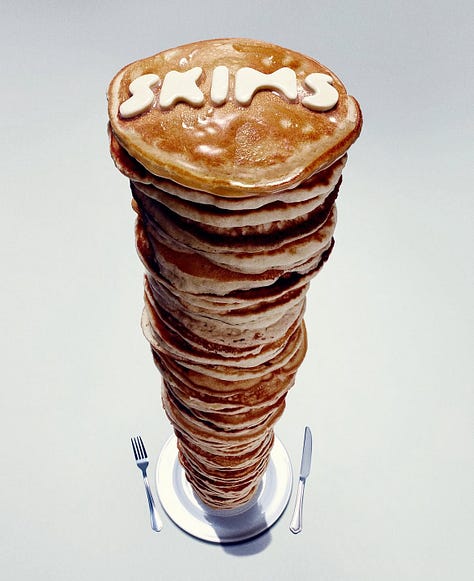

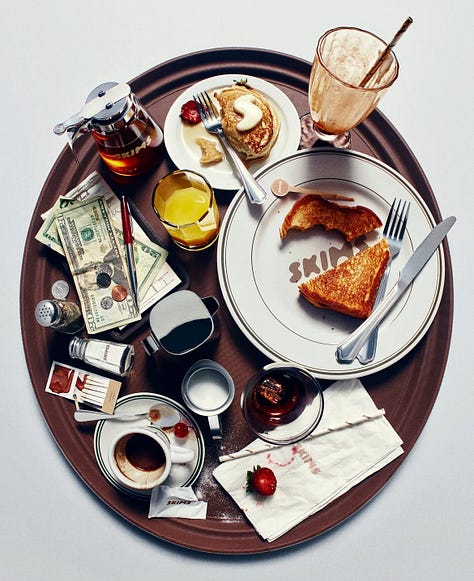
photos by Alex Paganelli (@deadhungry) Paris Hilton announced the launch of her “truly luxurious, innovative, and elevated” skincare line with FaceTune and a full beat. Anyway, I wrote about her entrepreneurial ambitions and plans a few months ago. 11:11 Beauty is now Parivie.
M&A deals for South Korean cosmetics firms reached a record in 2024—a trend set to continue as South Korea surpassed France to become the top exporter of cosmetics to the US last year. With cosmetics sales driven by the global popularity of K-pop and K-drama (Korean brands hold 22% of the US cosmetics market and 40% of Japan's), firms like L'Oréal and Archimed are eyeing South Korean beauty assets, and private equity funds are increasingly focused on Korean cosmetics. Here’s to hoping the Korea-U.S. Free Trade Agreement stands strong.
Once again, Tumblr has been declared Gen Z’s “safe space,” so here I am holding space for this biannual occurrence.
The Times interviewed more than a dozen Gen Xers about their careers and it made me sad. “The shedding of jobs and upending of longstanding business models have come at a bad time for Gen X-ers. The cost of living has skyrocketed, especially in coastal cities, and the burdens of mortgages, children’s college tuitions and elder care can be heaviest in middle age. Retirement isn’t that far off, theoretically — but Gen X-ers are less secure financially than baby boomers and lack sufficient retirement savings, according to recent surveys.” Humbling.
The Cut said men are spending thousands to text with their favorite OnlyFans creators. Comments section says dump him.
Marc Jacobs got Gabbriette and Amelia Gray to star in a campaign together. Fun, because not too long ago, I thought they were one and the same.
The Trump administration said it would be reviewing $9 billion in federal grants and contracts awarded to Harvard, claiming that the university had allowed antisemitism to run unchecked on its campus. Best believe they will bend the knee to every last demand. And quickly too.
The silent majority wins again. Meghan Markle’s first As Ever drop sold out in under an hour. Look how happy she looks. Bless her.

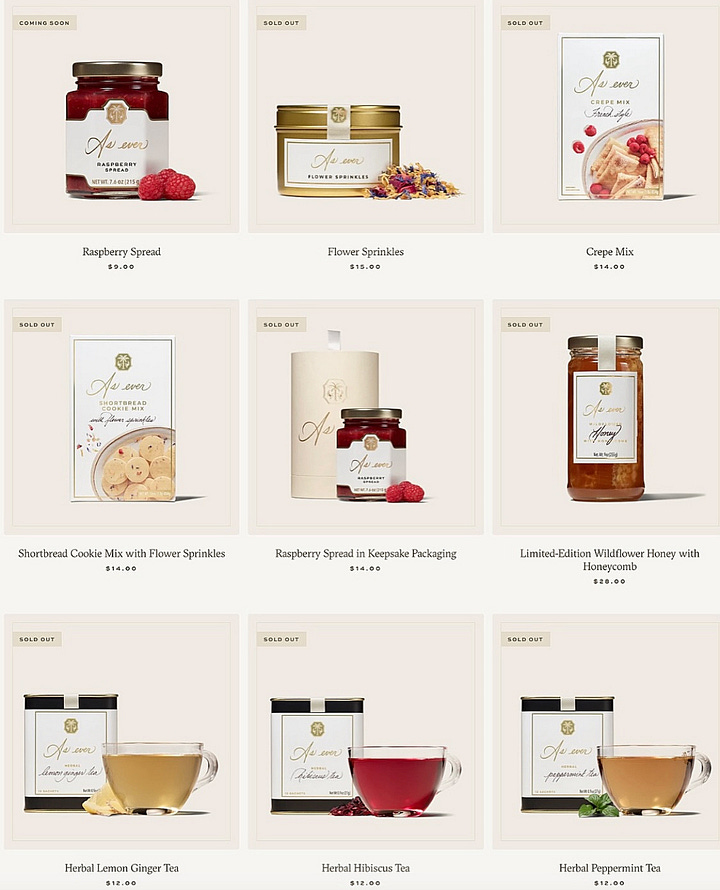
Big brands are allocating small portions of their advertising budgets to X to avoid getting on Elon’s bad side. One marketing executive told FT: “It’s not because the brand safety risk has gone away. But the far greater risk is that a comment from Musk in the press sends your stock price tumbling, and instead of a multimillion dollar risk, you’re facing a multibillion dollar risk.” Advertising holdcos are also entering “upfront deals” with the platform, committing advertisers to purchase slots in advance. According to leaked documents obtained by Adweek, Omnicom Group is offering clients major incentives—discounts in the thousands of dollars—to spend on X. Clients who didn’t advertise on the platform in 2024 are being offered 50% in added value, up to $200,000, for their investments on the platform during Q1 of 2025.
Meanwhile, conservative media outlets say they're seeing an uptick in advertising from major brands. A Gucci ad was recently spotted on Fox News.
If you’ve been paying attention, GapStudio has been around for a while now.
That January Vogue cover story finally makes sense—and so do those red carpet looks. Yesterday, Gap announced the launch of GapStudio, a fashion-forward premium line akin to what COS is for H&M. GapStudio will also house creative director Zac Posen’s special projects for celebrities and red carpet dressing. Posen said the idea came to him after the shirtdress he designed for Anne Hathaway last summer went viral. “Why not?” he asked. Why not indeed.
Gap had a strong 2024, with sales growing every quarter. They had viral red carpet moments; unexpected sellout collaborations. They brought back the fun ads. I heard more chatter about Gap last year—from marketers and consumers alike—than I had in a long time. Still, its 2024 $15.1 billion net sales are well below the $16.4 billion the company generated a decade prior, due in no small part to competition from Zara, H&M, and later, Shein and Temu.
If brands like H&M (which isn’t doing so hot) and Gap have been hit harder by Shein and Temu than Zara, it’s because Zara has positioned itself as a credible mid-tier brand. Elevated fast fashion. The premiumization of Zara. You know what I mean; I’ve written about it before. Zara has managed to command higher prices (and better margins) by essentially cosplaying as a luxury brand—celebrity collabs, high-production photoshoots, and a refined design language.
The “premiumization” of fast fashion is a trend we’ll continue to see as brands chase differentiation and better margins. Just yesterday, Glossy published a piece titled How Fast Fashion Learned to Dress Like The Row. In the past month alone, ASOS launched a premium in-house brand, Debenhams pivoted to a curated marketplace, and PrettyLittleThing made its Paris Fashion Week debut as part of its viral (and controversial) rebrand. Even Shein isn’t the business it used to be—Financial Times reported in February that the company’s 2024 net profit dropped nearly 40% as it battled competition from Temu. Once valued at $66 billion during its last funding round in 2023, some investors are now pressuring the company to slash its valuation to around $30 billion.
The most common criticism I’ve heard about Gap’s red carpet looks and big media moments is the question of how it all translates into their everyday range. GapStudio is their answer to this. Of course, they could have done this without launching a separate line, but now they can charge more for their trouble. What Posen is doing with GapStudio is far more thoughtful than what ASOS and PLT are attempting. This could work. I know they’ll try like hell to make it work—and I’ll write all about it.








I am SOOO outside your demographic - old, white woman, live in Florida blah blah. And yet your ruminations are spot on, interesting, and I enjoy reading you immensely. Carry on, you're marvelous.
longtime reader (& someone who constantly shares subs to this newsletter as i'm a paying subber!) and i - another person outside of your demo, but good is good and i love this n'letter so much - found that genx nyt piece to be so grim. i think genx and z will have a lot in common fretting about the travails of advanced tech/AI depressing opportunities across the board. i think the two gens are their own canaries in the coal mine about what's fast heading our way(s) about the state of not just creativity as a culture, but also as a career. one of the things that strikes me often about the items you cover is that many of the marketing approaches, trends and concepts tend to have a chilly same-sameness to them, and i think that often feels connected to the removal of original, risk-taking creative ideas that are fast going away